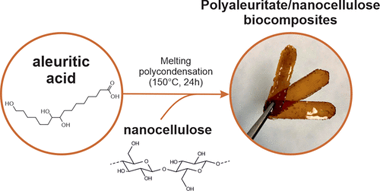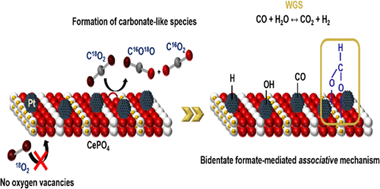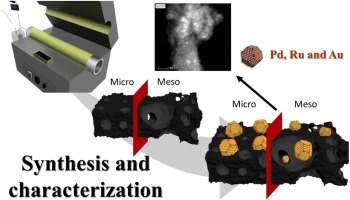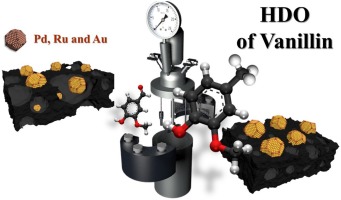Artículos SCI
2020
2020
Materiales de Diseño para la Energía y Medioambiente
Sustainable, High-Barrier Polyaleuritate/Nanocellulose Biocomposites
Tedeschi, G; Guzman-Puyol, S; Ceseracciu, L; Benitez, JJ; Cataldi, P; Bissett, M; Heredia, A; Athanassiou, A; Heredia-Guerrero, JAACS Sistainable Chemistry & Engineering, 8 (2020) 10682-10690
Show abstract ▽

Free-standing and flexible biocomposite films formed by a polyaleuritate matrix and nanocellulose fillers (i.e., cellulose nanofibrils) have been fabricated by a sustainable process. For this, 9,10,16-trihydroxyhexadecanoic (aleuritic) acid from shellac and nanocellulose were blended at different ratios in water through a sonication process. Polymerization of the polyhydroxylated fatty acid into polyaleuritate was induced by a solvent-free, melting polycondensation reaction in the oven. These biocomposites were characterized to evaluate their chemical (by ATR-FTIR spectroscopy) and physical (e.g., density, thermal stability, rigidity, gas permeability, surface energy, etc.) properties. The compatibility between the polyester matrix and the polysaccharide fillers was excellent due to the interaction by H bonds of the polar groups of both components. The addition of nanocellulose increased all determined mechanical parameters as well as the wettability and the barrier properties, while the thermal stability and the water uptake were determined by the polyaleuritate matrix. The physical properties of these biocomposites were compared to those of petroleum-based plastics and bio-based polymers, indicating that the developed materials can represent a sustainable alternative for different applications such as packaging.
Julio, 2020 | DOI: 10.1021/acssuschemeng.0c00909
Química de Superficies y Catálisis
Evaluation of the Oxygen Mobility in CePO4-Supported Catalysts: Mechanistic Implications on the Water-Gas Shift Reaction
Navarro-Jaen, S; Bobadilla, LF; Romero-Sarria, F; Laguna, OH; Bion, N; Odriozola, JAJournal of Physical Chemistry C, 124 (2020) 16391-16401
Show abstract ▽

The hexagonal and monoclinic phases of CePO4 have been demonstrated to be excellent catalytic supports for Pt-based water-gas shift (WGS) catalysts. Consequently, the elucidation of the WGS reaction mechanism in these materials constitutes a fundamental aspect in order to explain their catalytic behavior. Because the observed WGS reaction path is closely related to the absence or presence of oxygen vacancies in the support, the study of the oxygen mobility in these solids constitutes a key factor for the understanding of the structure of the materials and its influence on the reaction mechanism. In this study, the oxygen mobility in CePO4 supports and the corresponding Pt catalysts has been evaluated by means of isotopic exchange experiments using O-18(2) and (CO2)-O-18 as probe molecules. Results demonstrate that the evaluated solids present a low exchange activity when O-18(2) is used, indicating the absence of oxygen vacancies in these solids, thus suggesting a poor influence of the WGS redox mechanism. On the contrary, a high oxygen exchange activity is observed using (CO2)-O-18, demonstrating that the exchange in these materials takes place through the formation of carbonate-like intermediates, thus suggesting the associative mechanism of the WGS reaction as the preferred path in these solids. Operando diffuse reflectance infrared spectroscopy experiments under WGS reaction conditions confirm these results, proving that the WGS reaction in the studied materials takes place through a formate-mediated associative mechanism.
Julio, 2020 | DOI: 10.1021/acs.jpcc.0c03649
Química de Superficies y Catálisis
Metal catalysts supported on biochars: Part I synthesis and characterization
Santos, JL; Maki-Arvela, P; Monzon, A; Murzin, DY; Centeno, MAApplied Catalysis B-Environmental, 268 (2020) 118423
Show abstract ▽

In the current study, synthesis and detailed characterization of cellulose biochars as a waste biomass model component and vine shoot biochars as a real waste biomass catalyst was performed. Although initially biochars exhibit poor textural properties, a simple activation process can make them much more suitable as a catalyst supports. A combination of physical (CO2) and chemical activation (ZnCl2) was evaluated. The characterization results indicated that the surface area and pore volume of the biochars have increased significantly by chemical activation treatment with ZnCl2. A series of metal catalysts (Pd, Au and Ru) supported on biochars was prepared and characterized. The prepared materials represent a set of noble metal catalysts supported on biochars with different textural and surface properties, which can be used to evaluate the catalytic role of the active phase and carbon support nature in catalytic reactions of interest, such as hydrodeoxygenation, described in the part II.
Julio, 2020 | DOI: 10.1016/j.apcatb.2019.118423
Química de Superficies y Catálisis
Hydrodeoxygenation of vanillin over noble metal catalyst supported on biochars: Part II: Catalytic behaviour
Santos, JL; Maki-Arvela, P; Warna, J; Monzon, A; Centeno, MA; Murzin, DYApplied Catalysis B-Environmental, 268 (2020) 118425
Show abstract ▽

Vanillin hydrodeoxygenation was investigated using noble metal (Pd, Au, Ru) supported on active carbon prepared from waste derived biochars, which were produced via pyrolysis in CO2 atmosphere. Chemical activation with ZnCl2 and HNO3 was also used in the preparation of active carbon to enhance the specific surface area and demineralize material, respectively. Both fresh and spent catalysts were characterized with X-ray diffraction, DRIFTS, zeta potential measurement and HR-TEM. The highest selectivity to p-creosol, 92 % selectivity at complete vanillin conversion after 3 h was obtained in vanillin hydrodeoxygenation at 100 degrees C under 30 bar in hydrogen in water with Pd/C catalyst prepared via pyrolysis under CO2 from wine waste and using ZnCl2 as a chemical activation agent. Hydrodeoxygenation activity increased with increasing metal dispersion. A kinetic model including adsorption of vanillin described well the experimental data.
Julio, 2020 | DOI: 10.1016/j.apcatb.2019.118425
Química de Superficies y Catálisis
Cost-effective routes for catalytic biomass upgrading
Jin, W; Pastor-Perez, L; Yu, J; Odriozola, JA; Gu, S; Reina, TRCurrent Opinion in Green and Sustainable Chemistry, 23 (2020) 1-9
Show abstract ▽
Catalytic hydrodeoxygenation (HDO) is a fundamental and promising route for bio-oil upgrading to produce petroleum-like hydrocarbon fuels or chemical building blocks. One of the main challenges of this technology is the demand of high-pressure H-2, which poses high costs and safety concerns. Accordingly, developing cost-effective routes for biomass or bio-oil upgrading without the supply of commercial H-2 is essential to implement the HDO at commercial scale. This article critically reviewed the very recent studies relating to the novel strategies for upgrading the biofeedstocks with 'green' H-2 generated from renewable sources. More precisely, catalytic transfer hydro-genation/hydrogenolysis, combined reforming and HDO, combined metal hydrolysis and HDO, water-assisted in-situ HDO and nonthermal plasma technology and self-supported hydrogenolysis are reviewed herein. Current challenges and research trends of each strategy are also proposed aiming to motivate further improvement of these novel routes to become competitive alternatives to conventional HDO technology.
Junio, 2020 | DOI: 10.1016/j.cogsc.2019.12.008
- ‹ anterior
- 97 of 410
- siguiente ›














